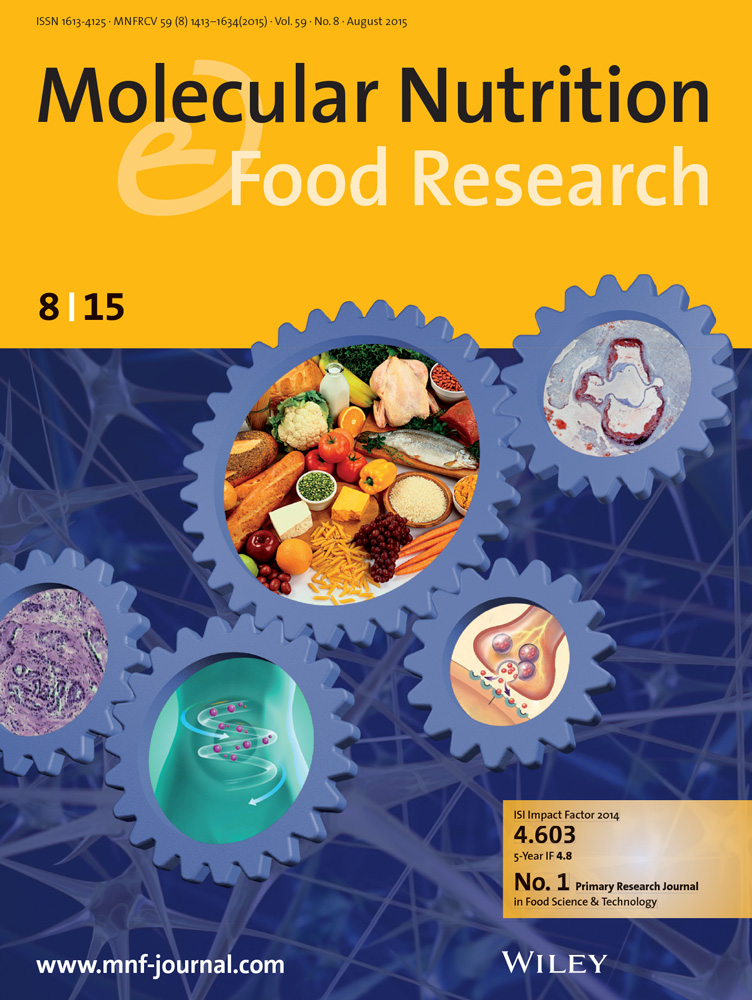多组学揭示柚皮苷对蛋鸡代谢功能障碍相关性脂肪肝的影响及调控机制
IF 4.5
2区 农林科学
Q1 FOOD SCIENCE & TECHNOLOGY
引用次数: 0
摘要
本研究旨在以老龄蛋鸡为模型,研究柚皮苷对代谢功能障碍相关脂肪性肝病(MAFLD)发生、发展的影响及其潜在的调控机制。选取50周龄蛋鸡288只,分为4组:正常饲粮(ND)组和柚皮苷(200 mg/kg (N1)、400 mg/kg (N2)和600 mg/kg (N3))组。试验期为10周,试验结束后采集蛋鸡血清、肝脏和盲肠内容物。结果表明,饲粮中添加柚皮苷可减少肝脏脂质沉积,降低血脂水平,提高抗氧化能力,促进雌二醇分泌。此外,16S rDNA分析显示,柚皮苷增强了盲肠中的微生物多样性,并调节了与脂肪肝相关的肠道微生物的丰度。血液的非靶向代谢组学表明,柚皮苷降低了甘油磷脂和固醇脂代谢物的浓度,同时增加了泛酸和氨基酸代谢物的水平。此外,肝脏转录组分析表明,柚皮苷在促进脂肪酸氧化的同时干扰脂肪酸的合成和转运过程。饮食中补充柚皮苷可以通过调节肠-肝轴和雌激素信号传导来减轻MAFLD的发生,特别是在绝经后妇女中。本文章由计算机程序翻译,如有差异,请以英文原文为准。
Multiomics Reveal the Effects and Regulatory Mechanism of Naringin on Metabolic Dysfunction‐Associated Fatty Liver Disease of Laying Hens
This study aimed to utilize aged laying hens as a model to investigate the effects of naringin on the occurrence and progression of metabolic dysfunction‐associated fatty liver disease (MAFLD), along with its underlying regulatory mechanisms. A total of 288 aged laying hens, 50‐week‐old, were divided into four groups: a normal diet (ND) group, and three naringin groups receiving 200 mg/kg (N1), 400 mg/kg (N2), and 600 mg/kg (N3). The experiment lasted for 10 weeks, after which serum, liver, and cecal contents were collected from the hens. Results indicated that dietary naringin supplementation reduced hepatic lipid deposition, lowered blood lipid levels, improved antioxidant capacity, and promoted estradiol secretion. Additionally, 16S rDNA analysis revealed that naringin enhanced microbial diversity in the cecum and regulated the abundance of gut microbes associated with fatty liver. Untargeted metabolomics of blood demonstrated that naringin decreased the concentration of glycerophospholipid and sterol lipid metabolites while increasing levels of pantothenic acids and amino acid metabolites. Furthermore, liver transcriptome analysis indicated that naringin interfered with fatty acid synthesis and transport processes while enhancing fatty acid oxidation. Dietary naringin supplementation can mitigate the occurrence of MAFLD by regulating the gut–liver axis and estrogen signaling, particularly in postmenopausal women.
求助全文
通过发布文献求助,成功后即可免费获取论文全文。
去求助
来源期刊

Molecular Nutrition & Food Research
工程技术-食品科技
CiteScore
8.70
自引率
1.90%
发文量
250
审稿时长
1.7 months
期刊介绍:
Molecular Nutrition & Food Research is a primary research journal devoted to health, safety and all aspects of molecular nutrition such as nutritional biochemistry, nutrigenomics and metabolomics aiming to link the information arising from related disciplines:
Bioactivity: Nutritional and medical effects of food constituents including bioavailability and kinetics.
Immunology: Understanding the interactions of food and the immune system.
Microbiology: Food spoilage, food pathogens, chemical and physical approaches of fermented foods and novel microbial processes.
Chemistry: Isolation and analysis of bioactive food ingredients while considering environmental aspects.
 求助内容:
求助内容: 应助结果提醒方式:
应助结果提醒方式:


